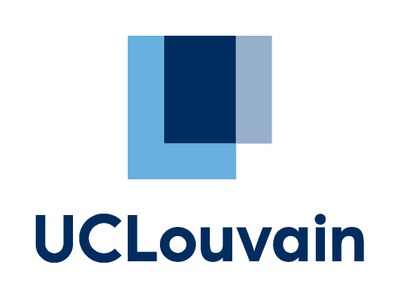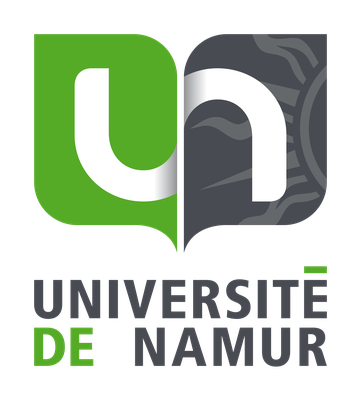AC-DC
The project
Nowadays, 90% of the overall chemical processes are developed with the aid of a heterogeneous catalyst. Acid-catalyzed reactions are among the most investigated class of processes since they cover a plethora of applications as alkylation, isomerization, hydrocracking, alkene polymerization, CO2 conversion and a series of reactions related to biomass transformation. It is known that the overall Brønsted /Lewis acid balance of the solid influences strongly the final catalytic properties. Moreover, in order to improve the efficiency of chemical reactions and processes a crucial step is a molecular understanding of the surface activity. Brønsted acidity in zeolite was already extensively investigated but quantification of the strength of Lewis acid sites is more challenging. Moreover, porous materials with an amorphous SiO2 skeleton bring additional complexity to this analysis.
Despite the various attempts to understand the respective role played by the Brønsted and Lewis acidities, there is a lack of fundamental knowledge on the ideal Brønsted/Lewis acid balance that a catalyst formulation should present to enhance the overall performances (activity/selectivity). Herein, we propose a multidisciplinary approach starting with the fine tuning of a series of catalyst features (Design), combined with an in-depth characterization associating experimental tools with quantum chemical simulations (Understanding). The solids will be tested as heterogeneous catalysts targeting environmentally sustainable reactions, with the two other tasks serving as basis and integrated approach for the enhancement of the catalyst performances (Improvement).
The main goal is to improve the fundamental understanding via the rationalization of a series of parameters, in order to unveil a precise design of heterogeneous catalysts with the desired Brønsted/Lewis acid balance. The approach will concern mainly SiO2 based materials but will be extended (within the project) to other solid acid systems. The knowledge acquired can be useful for other acid-catalyzed processes.
Our team
Members of the consortium
PhD students involved
Our collaborators
|
 |
 |
Activities
- Noé Laloux
Thematic school MECAREACT 2023 – Poster presentation
Modified heteropolyacids as innovative catalysts for the gas phase methanolation of toluene into xylenes
Authors: Noé Laloux, Carmela Aprile, Eric M. Gaigneaux
Paris (18 - 23/06/2023) - Vittorio Marsala
Young Belgian Magnetic Resonance Scientist 2023 – Poster presentation
Towards the understanding of the formation mechanism of hollow silica nanotubes and nanospheres: an NMR approach
Authors: Vittorio Marsala, Loraine Soumoy, Luca Fusaro, Carmela Aprile
Blankenberge (13 - 14/11/2023) - Vittorio Marsala
Namur Institute of Structured Matter (NISM) Annual Meeting 2023 – Flash talk and poster presentation
Towards the understanding of the formation mechanism of hollow silica nanotubes and nanospheres: an NMR approach
Authors: Vittorio Marsala, Luca Fusaro, Carmela Aprile
Namur (18/12/2023) - Charles Rubirigi
EFID – Oral presentation
Computational NMR study of heterogeneous aluminosilicate catalysts
Namur (24/05/2024) - Vittorio Marsala
EFID – Flash presentation and poster
Towards the understanding of the formation mechanism of hollow silica nanotubes and nanospheres: an NMR approach
Namur (24/05/2024) - Noé Laloux
IMCN PhD Student’s Day 2024 – Poster presentation
H₃PW₁₂O₄₀ co-substituted with NH₄⁺ and Sn²⁺ as tunable catalyst for the methanolation of toluene
Authors: N. Laloux, C. Aprile, E. M. Gaigneaux
Louvain-la-Neuve (24/05/2024) - Charles Rubirigi
CHITEL – Poster and flash poster presentation
Computational NMR study of heterogeneous aluminosilicate catalysts
Namur (4/07/2024) - Vittorio Marsala
International Congress on Catalysis 2024 (ICC 2024) – Poster presentation
Tin-doped low-dimensional silica nanostructures for the conversion of glycerol into solketal
Lyon (14 - 19/07/2024) - Vittorio Marsala
51st National Congress on Magnetic Resonance (GIDRM 2024) – Poster presentation
NMR Investigation on toluene and temperature induced micellization of Pluronic F127: Influence on hollow silica nanostructures
Florence (04 - 06/09/2024) - Vittorio Marsala
Young Belgian Magnetic Resonance Scientist 2024 – Poster presentation
Toluene-induced Pluronic F127 micelles as templating agent for hollow silica nanostructures: an NMR study
🏆Best Poster
Authors: Vittorio Marsala, Anthony Morena, Luca Fusaro, Carmela Aprile
Blankenberge (25 - 26/11/2024) - Vittorio Marsala
Namur Institute of Structured Matter (NISM) Annual Meeting 2024 – Poster presentation
NMR Investigation on toluene and temperature induced micellization of Pluronic F127: Influence on hollow silica nanostructures
Authors: Vittorio Marsala, Anthony Morena, Luca Fusaro, Carmela Aprile
Namur (16/12/2024) - Vittorio Marsala
SRC Young Chemists' Day 2025 – Talk
Toluene-induced Pluronic F127 Micelles as Templating Agent for Hollow Silica Nanostructures: a NMR Study
Bruxelles (16/05/2025)
AC-DC | An ARC project
 Funded by the Federation Wallonie-Bruxelles (FWB), ARC projects are Concerted Research Action projects that aim at developing university or inter-university centres of excellence in fundamental research axes and, where possible, that carry out basic and applied research in an integrated manner and aim to make economic and social use of research results. They are awarded based on academic excellence of the applicants, the added value of each research group to achieve goals of research project, complementary skills of research teams and the methodology of proposed research program. They typically last for 4 to 5 years. In case of inter-university project, each team is financely supported by its own institution
Funded by the Federation Wallonie-Bruxelles (FWB), ARC projects are Concerted Research Action projects that aim at developing university or inter-university centres of excellence in fundamental research axes and, where possible, that carry out basic and applied research in an integrated manner and aim to make economic and social use of research results. They are awarded based on academic excellence of the applicants, the added value of each research group to achieve goals of research project, complementary skills of research teams and the methodology of proposed research program. They typically last for 4 to 5 years. In case of inter-university project, each team is financely supported by its own institution
More information on the FWB website

